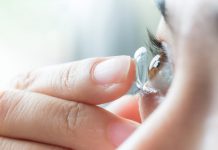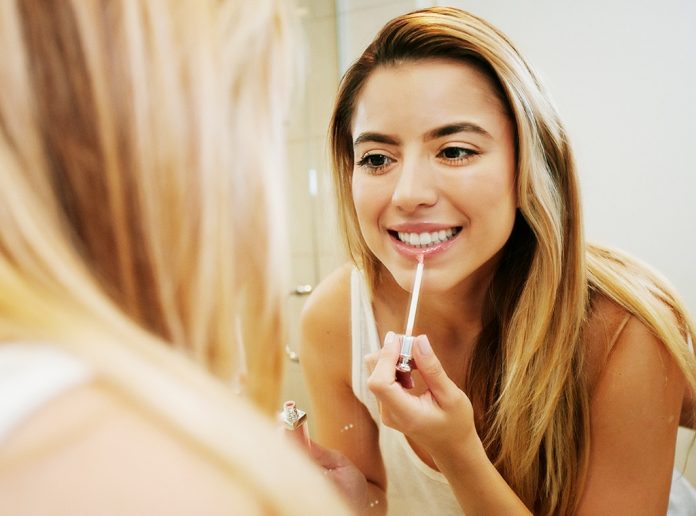A fictional symbol for an impending beheading and a style staple for the Hollywood elite, here we take a deep dive into everything you need to know about beauty marks.
Beauty marks are associated with some of the most famous faces in the world. From Marilyn Monroe to Cindy Crawford to Elizabeth Taylor, this simple blemish has spearheaded careers and intrigued the masses. However, the question remains, what is a beauty mark? We break it down below.
What Is a Beauty Mark?
To put it simply, a beauty mark is a glorified mole; it’s the favorite sibling who has all the shine found in extra parental love and affection. Formed when cells begin to cluster instead of distributing evenly throughout the skin, a mole and a beauty mark consist of the same genetic makeup. The only difference is a “mole” is a scientific term whereas a “beauty mark” relates to the aesthetic value and the placement of the mole. For instance, if a mole appears on the face, by societal standards it is deemed a beauty mark. However, if that same mole appears on your arm, then it’s just a normal civilian mole with no celebrity connotations. Sorry.
And while popular culture will have you believe that beauty marks are for the fair and few, this is simply not true. According to the Cleveland Clinic, “most moles appear in early childhood and during the first 20 years of life. It’s normal for a person to have between 10-40 moles by adulthood.” It’s also important to note that moles and freckles are not the same. Moles usually sit above the skin in a darker hue, but freckles are lighter, embedded in the skin, and come to the skin’s surface when exposed to sunlight.
To further dispel any other beauty mark misconceptions, we have rounded-up the weirdest and most wonderful facts you need to know about this sought after blemish. Thank us later.
20 Must-Know Facts About Beauty Marks
Like everything, the French did it first. Beauty marks, or mouches in French, started becoming fashionable in 16th-century France amongst the French aristocracy.
Not all moles are beauty marks, but all beauty marks are moles. It comes down to aesthetics, if placed on the face it is commonly noted as a beauty mark. But, if one appears anywhere else on the body, it’s a mole.
You can be born with one, or one can appear in later life. While only one percent of babies are born with beauty marks, you can develop them in childhood, adolescence, and for some, adulthood.
Shakespeare was a fan of beauty marks. So much so that he embellished his protagonist Imogen, from the play Cymbeline, with one.
Beauty marks appear in one out of 100 people.
Beauty marks were used in the 18th century to cover smallpox scars. Women started applying mouse fur to their scars to hide the touch of the disease.
No one knows whether Marilyn Monroe’s beauty mark was real or fake. There has been much debate surrounding the beauty staple, with some people claiming that Monroe hid the mark earlier in her career in order to secure acting jobs. However, there are photographs depicting the obvious movement of the mole from her cheek, to the side of her chin.
You can get a Monroe piercing for $50 at your local piercing parlor. Mirroring the placement of Monroe’s own beauty mark, the piercing is used as a way to evoke the star’s Old Hollywood air.
Kelly Rowland regularly sports a faux beauty mark. The singer told People magazine in 2014, “I like moles. I think they’re the cutest thing. It’s all Marilyn Monore’s fault.”
The Romans believed it was a curse from the Gods. Leave it to antiquity to come up with mythical reasoning for beauty marks. Deeming that humans had become far too beautiful, in an envious rage, the god’s sent down these marks to reinstate their own beautiful status.
Beauty marks supposedly show character insight. In fiction, a mole near the neck foretold an impending beheading, whereas one near the mouth was a sign of gluttony.
Hippocrates, the father of modern medicine, believed that moles were directly linked to the stars. Which, when you think about it, is not wrong considering moles and freckles can sometimes create a constellation-like effect.
Dita Von Teese’s beauty mark is a tattoo. The burlesque dancer told Into the Gloss that she had penciled in her mole before ultimately getting it tattooed when she was 21.
Beauty marks can be hereditary. If your parents have beauty marks, you might be born with them, too.
Much medieval history denotes beauty marks as evidence of the devil, hence why witches are commonly depicted with hairy moles.
The bigger the star, the bigger the beauty mark. Stars such as Elizabeth Taylor and Edie Sedgwick emphasized their marks as they got more famous.
Cindy Crawford wanted to get her beauty mark removed. In a conversation with American Vogue, the model said, “I would get teased by the other kids in school, so I definitely wanted to get it removed.”
Beauty marks were a hard no during the Victorian era. Preferring a blemish-free complexion, many people tried covering theirs up with makeup and skin-whitening products.
At Chanel’s 2012 Cruise Show, Karl Lagerfeld sent models down the runway with beauty marks mirroring Chanel’s famous interlocking C logo.
A red beauty mark is meant to be a sign of good luck and fortune, according to traditional Chinese Medicine.




























